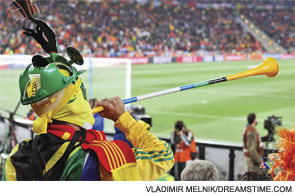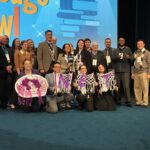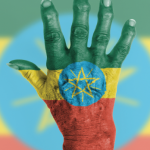
U-S-A! U-S-A! U-S-A! Pardon the patriotic outburst but, watching the U.S.–England match, I was hit by World Cup spirit and relished cheering the Americans on. After rousing victories (and ties) to get to Round 16, the Yanks lost a 2–1 heartbreaker to Ghana. Then the big boys from old Europe took charge, squashing the hopes of Asia and Africa to finally make it to the big dance. Congratulations to Spain on its exciting overtime triumph against the Netherlands.
World Cup Fever
Soccer is not a game for Americans. Despite the phenomenal athleticism of the players, there is no scoring, with one–nil matches seemingly the norm. That’s tough for Americans, who want the scoreboard to light up like fireworks with points from touchdowns, grand slams, and trifectas. Also, the World Cup had to vie for attention this year with the National Basketball Association finals, the U.S. Open at Pebble Beach, Wimbledon, the rise of strikeout whiz Stephen Strasburg (subsequently disabled with a torn ulnar collateral ligament), the Tour de France, and last, but not least, the LeBron free-agency sweepstakes.

Watching the World Cup matches on television was difficult because of the relentless and unnerving drone from the vuvuzelas. In one venue, the sonic blast reached 144 decibels, enough to threaten the strongest tympanic membrane and make it quiver near disintegration. Commentators said that the sound was like a swarm of giant bees. If not original, that description is certainly accurate. I think that fans of soccer should emulate those of tennis or golf, where a cough, sneeze, or the most subtle visceral noise is anathema.
I have three suggestions for the next World Cup. First, add a shot clock. If, after a reasonable period of time, a team does not shoot on goal, give the opponent one of those free kicks in which a line of players, looking anxious as they shield their private parts, guards the goal. Obviously, a 24-second clock is unrealistic for soccer. How about 10 minutes?
Second, recycle the vuvuzelas. This year, the World Cup touted its greenness because some teams used uniforms made from recycled plastic. I found that a touch quaint. Given the millions of gallons of gas (a translation for everyone outside the U.S.: liters of petrol) expended flying fans, teams, and the media to and from South Africa, heating hotels, manufacturing vuvuzelas, etc., etc., etc., using recycled material for jerseys will not exactly save the earth.
Third suggestion: No vuvuzelas. Also, no air horns, whistles, or rattles. Not even kazoos.
Bring the Excitement to Rheumatology
While my World Cup fever cooled with the aspirin of American defeat, I nevertheless got an idea worth considering. I think that we should have World Cup of Rheumatology Research. Such a World Cup would be a good new thing.
For the World Cup of Rheumatology, each country would field top scientists to determine who is best in the fight against arthritis and autoimmunity. While national competition is stirring, I know that it is contrary to the current spirit of cooperation, where we have a multitude of League Against Rheumatism (LAR) organizations, public–private partnerships, collaborative research networks, and ACR–EULAR committees (or is it EULAR–ACR?) that produce guidelines and recommendations for the rest of the world.
Harmony rules today, the sharper barbs of nationalism seemingly cut away. While the progress engendered has been incredible, perhaps some competition on the global stage will energize our researchers, the young people especially. For America, which hates to be second best in anything, the prospects of competition could cause Congress to boost research spending to assure that we don’t fall behind the English, Dutch, or Germans. (I know I am leaving out many countries that do terrific work. My apologies, but space is limited.)
Just as they support Olympians, companies could chip in some dough to develop our youngsters, sending them to training camps and summer leagues, keeping Team USA well stocked for the future. With enough interest, the World Cup of Rheumatology Research might even make it to ESPN, generating lucrative TV contracts for our organizations. Deals to endorse beer, cars, or underwear for champion researchers could follow.
As a format, I suggest that each national team has five members who, having been escorted to the podium holding hands with cute little kids, present talks judged for creativity and importance by impartial referees (NOT FROM MALI!) who signal their scores by hoisting number cards like those in the figure skating or gymnastics. Ties would end with PowerPoint shootouts, real mano a mano. Seeding would be based on the cumulative impact factor of publications for the past few years. To give emerging countries a shot at victory (as is done with the U.S. in the real World Cup), there can be some wild cards or preliminary rounds. Then the knockout round until only one team emerges champion and streets somewhere fill with cars raucously blaring horns as fans, draped in the flag of their country, do a jubilant conga, rumba, or jig.
The spirit would be tremendous as rheumatologists with one-word names like Nomid, Anca, or Cinca compete for national teams like the Rheumeroos. For the event, the Dutch would bring thousands of fans dressed in shockingly bright orange. Not to be outdone, the Brits would import squads of hooligans who look like Wayne Rooney, their vaunted striker, and root lustily for the lads from London, Leeds, or Manchester, busting heads and rampaging wildly should defeat occur (as I may remind you, it occurred in South Africa).
If you don’t think Europeans love national competition, just get near a Swede, Dane, or a Norwegian discussing a football match among them. Their rivalry is a revelation, the otherwise sober and stolid Scandinavians getting it on, reveling in woofing and trash talk of the most shocking kind, blood enflaming their otherwise pale cheeks.
While such a World Cup may sound silly, science is always competitive, albeit at the individual level. There is an “I” in Nobel Prize, which rewards individuals (usually working separately), not teams. The exception is the occasional duo like Brown and Goldstein or Hitchings and Elion. In the U.S., academic institutions like to compete over National Institutes of Health (NIH) rankings, but the strategy to climb the ladder is to recruit or bankroll top individuals. Companies, of course, compete in product development, but the metric of success (think Wall Street) is often profitability, not basic discovery.
In the global competition, rheumatology is peanuts, but a national commitment to advance research could have a galvanizing effect, inspiring students to take up science, embark on academic careers, and strive to best their counterparts overseas. To achieve that goal, the U.S. government has to mightily refuel the stimulus program and commit to a big NIH expansion to assure that American science stays on top.
In the spirit of the World Cup and the cause of American rheumatology, I would like to unfurl the banner of Bethesda, blast a vuvuzela, and make a holy racket.
Please join the din.
ZZZZZZZZZZZZZZZZZZZZZZZZZZZZZZZZZZZZZZZZZZZZZZZZZZZZZZZZ!
Dr. Pisetsky is physician editor of The Rheumatologist and professor of medicine and immunology at Duke University Medical Center in Durham, N.C.


